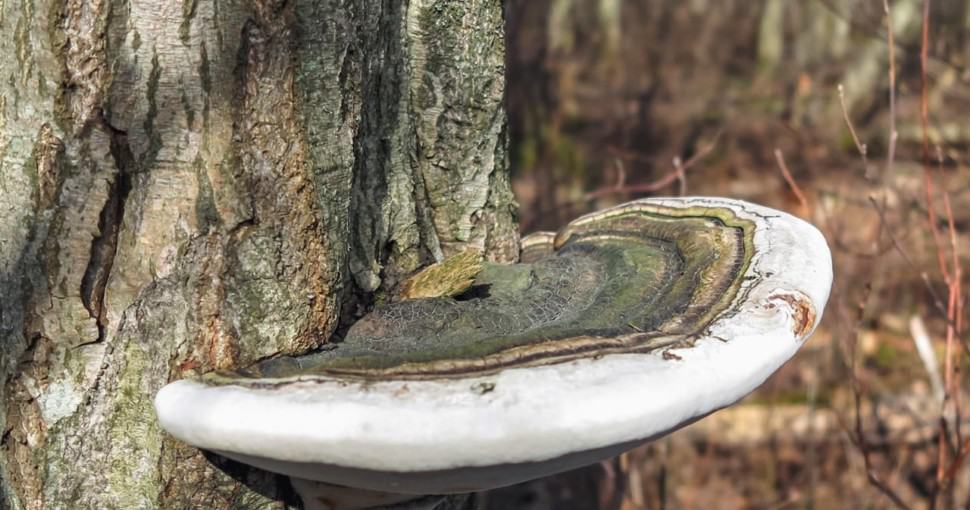No tree species are entirely resistant to Ganoderma fungal disease, which affects the roots and trunks and causes the trees to rot from inside. Fortunately, there are many tree species that have a lower probability of hosting Ganoderma fungi than other tree species.
Contents
Hardy tree varieties with strong resistance to fungal pathogens are generally resistant to infection by Ganoderma fungi. However, scientific research has yet to identify tree varieties that demonstrate complete resistance or immunity to Ganoderma fungal disease.
Though no tree species are scientifically-designated as Ganoderma resistant, certain tree species are unlikely to be affected by Ganoderma fungi. With careful maintenance and the implementation of basic fungal disease prevention measures, these trees are generally impervious to Ganoderma infections and diseases.
Here is a list of six low-maintenance trees that have strong resistance to fungal diseases. These trees are unlikely to be affected by Ganoderma fungi. Most of these trees are native to North America, and certain species thrive in the kinds of moist growing conditions that may be conducive to Ganoderma fungal infection.
Related: 8 Highly Disease Resistant Trees
1. Flowering Crabapple
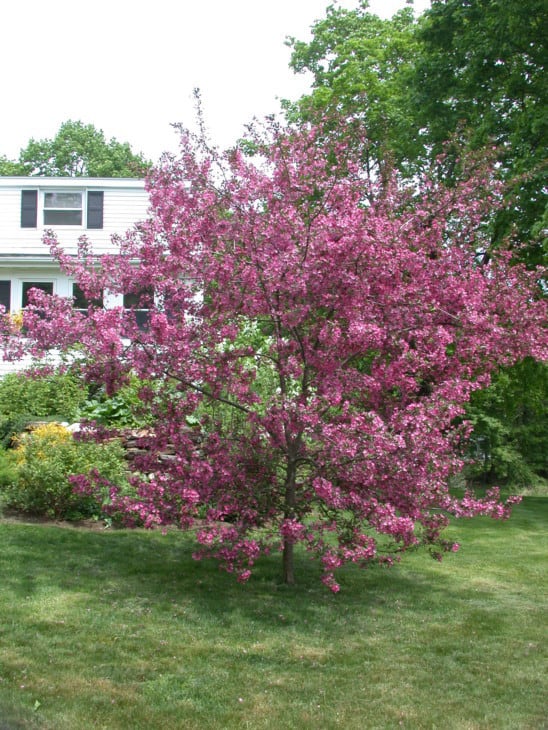
Flowering Crabapple (Malus ‘Centzam’ Centurion) is one of the hardiest, most disease-resistant crabapple cultivars. They are attractive, deciduous trees that grow roughly 20ft to 25ft high, with a broad, multi-stemmed canopy. Flowering crabapple trees have green, oval leaves with red undertones, turning bronze and reddish-orange in autumn.
The flowers of flowering crabapples emerge in April and are large and light pink. Flowering crabapples also produce small, visually-striking bright red berries (or crabapples) that are a prized food source for birds.
Flowering crabapples are hardy, low-maintenance trees that grow best in full sun. They have average water requirements and prefer slightly acidic soil but are adaptable to a broad diversity of soil and climate conditions. Unlike many other crabapple varieties, the flowering crabapple has strong resistance to fungal diseases.
2. Bitter Hickory
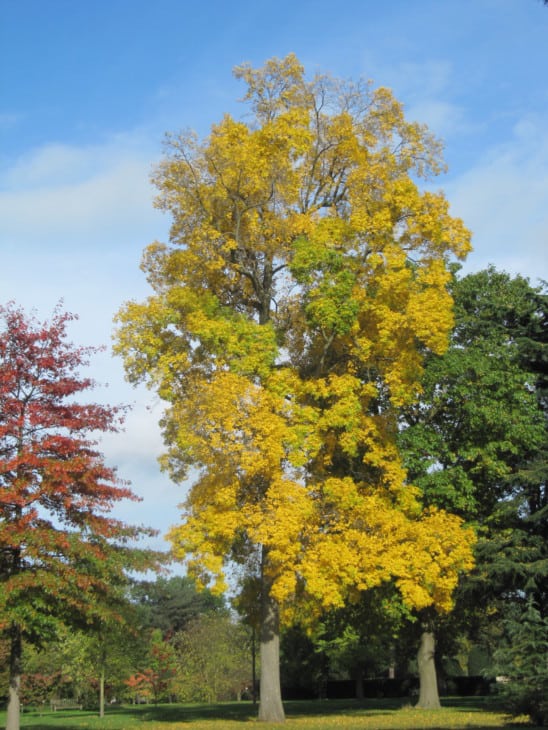
Bitter hickory (Carya cordiformis) is a disease-resistant deciduous tree species. It is native to North America. This tree is also well resistant to hurricanes. They are large trees, growing between 50ft and 80ft tall and 30ft to 50ft wide. The broad crowns of bitter hickory trees provide an excellent source of shade.
Bitter hickory trees have yellowish green, compound, pinnate leaves. The bark is gray and brown. It is smooth in younger bitter hickory trees, becoming slightly furrowed as trees mature. Bitter hickory trees produce small, fluffy, elongated flowers called catkins. Mature trees develop nuts that are edible but intensely bitter.
Bitter hickory trees are low-maintenance trees that rarely get affected by common tree diseases. They grow successfully in full sun or partial shade and grow in a wide range of climate and soil situations. Bitter hickory trees have extensive root systems and shouldn’t be grown near buildings.
3. River Birch
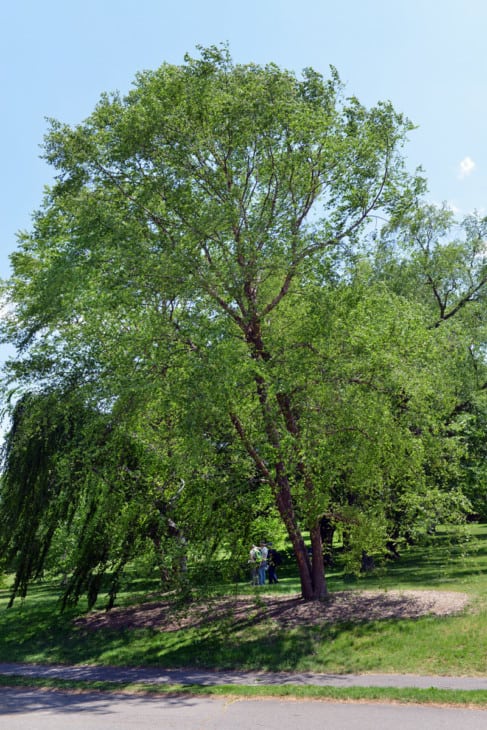
River birch (Betula nigra) is a fast-growing deciduous tree and is resistant to the majority of common tree diseases. It is endemic to North America and is one of the hardiest birch species. River birch trees have single or multiple trunks and broad canopies and grow between 40ft and 70ft high.
The leaves of river birch trees are diamond-shaped, toothed, and dark green, changing to yellow in autumn. In April, river birch trees produce large, sculptural catkin flowers. The male flowers are light brown, and the female flowers are yellowish-green. River birch bark is light-pink and brown, and highly textured.
River birch is among the most disease-tolerant and adaptable birch tree species. They prefer mildly acidic soil with high soil moisture levels but tolerate intermittent periods of drought. River birch trees are typically unaffected by infection by fungi like Ganoderma because of their strong disease resistance and tolerance of shady, moist locations.
4. Pond Cypress
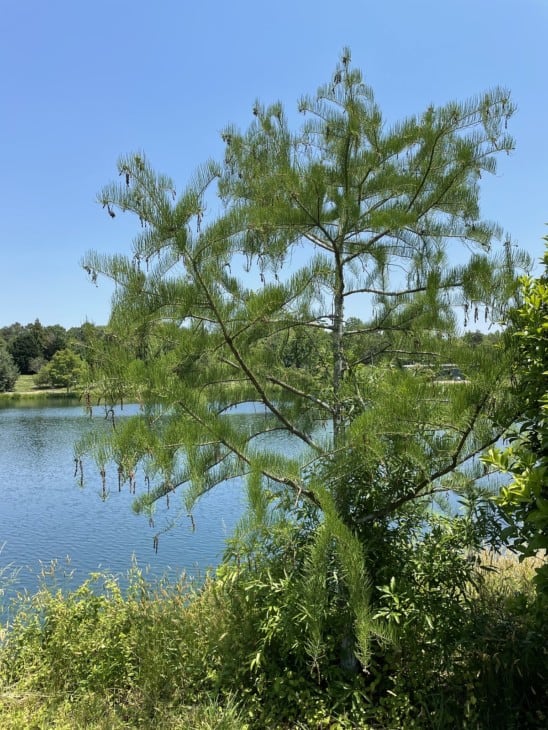
Pond cypress (Taxodium ascendens) is a low-maintenance, disease-resistant conifer tree species. It is native to the southeastern coast of the United States. Pond cypress trees are deciduous and grow between 30ft and 70ft high in a pyramidal crown that widens as the trees mature.
Pond cypress trees have attractive green needle-like leaves that become orange and brown in autumn. The bark of pond cypresses has rough dark brown ridges and smooth reddish-gray streaks where exfoliation has occurred.
Pond cypress trees are hardy and adaptable. They thrive in moist or waterlogged soil while being highly resistant to diseases that might affect other tree species when grown in similarly wet soil conditions.
Related: 5 Interesting Cypress Tree Benefits
5. Cucumber Tree
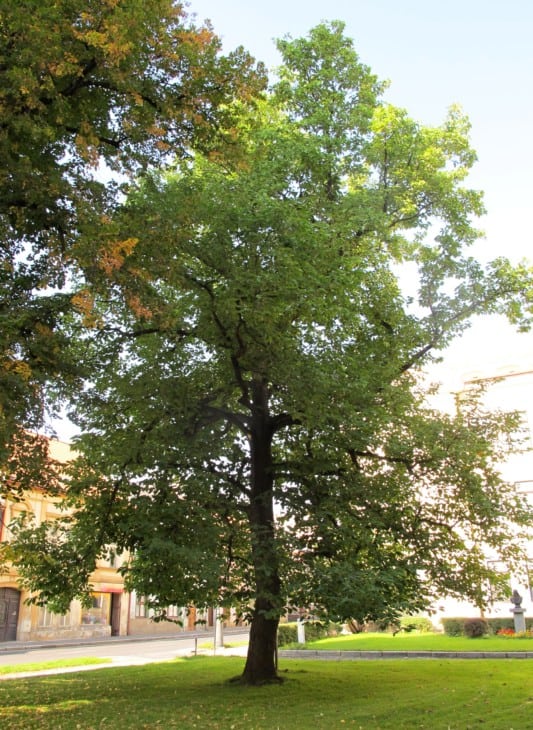
The cucumber tree (Magnolia acuminata) is a magnolia tree species that exhibits strong disease resistance. It is native to the US, where the cucumber tree thrives in cool, moist, mountainous areas. The cucumber tree is significantly larger than most other magnolia species, reaching a height of between 40ft and 70ft, with a broad, pyramidal crown 20ft to 30ft wide.
The green and yellow leaves of cucumber trees turn a characteristic golden-brown in autumn. Their leaves are ovate with pointed (acuminate) tips. Cucumber tree bark is gray and brown, with shallow furrows. The trees produce beautiful, greenish-yellow, aromatic flowers and green, roughly-textured seed-cone fruits that resemble cucumbers.
Cucumber trees are low-maintenance trees that tolerate a wide range of growing conditions but grow most vigorously in soils that remain consistently moist. They are hardy and highly resistant to disease.
6. Kousa Dogwood
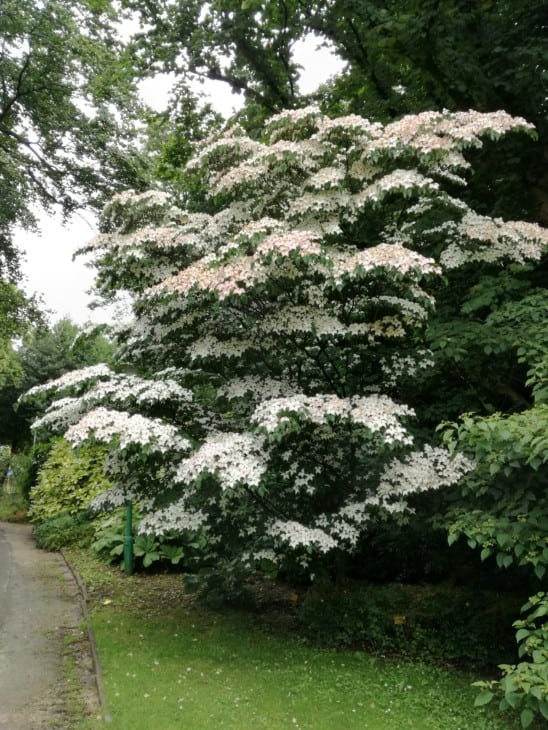
Kousa dogwood (Cornus kousa) is a hardy, disease-resistant, deciduous tree species native to Asia. It grows to a modest average height of between 20ft and 30ft, with a broad, rounded crown. Kousa dogwood is highly decorative and is used often as a specimen tree.
The leaves of kousa dogwood trees are elliptical and dark green, changing to dark red during autumn. Kousa dogwood produces small, attractive white to light pink flowers and equally attractive, round, reddish-purple fruits. The bark of kousa dogwood is light gray and brown, with a molted texture from exfoliation.
Kousa dogwood trees have low-maintenance requirements. They grow well in a diverse range of soil conditions but prefer moist, slightly acidic soil and require regular watering in summer. Kousa dogwood tolerates cold temperatures and is considerably more disease-resistant than other commonly grown species like flowering dogwood (Cornus florida).

